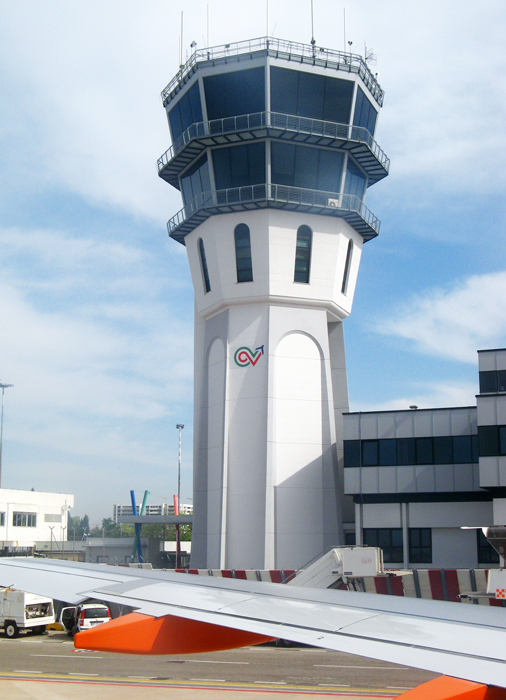
Having departed Lecce much earlier, our coach dropped us off at this imposing fortress by the sea, Castello Svevo:
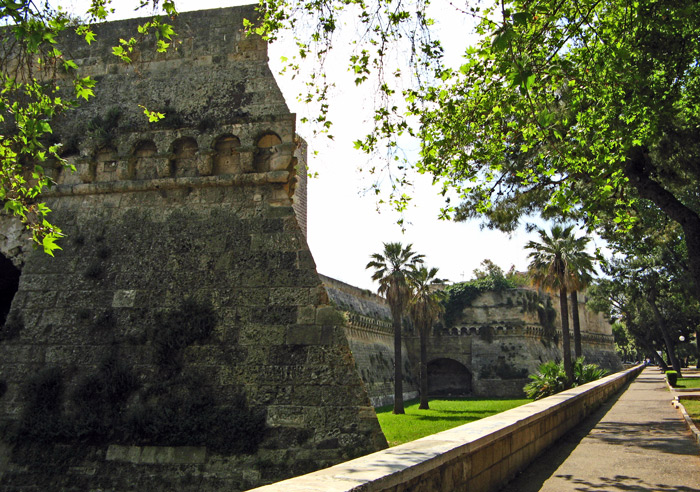
Our guided tour began around the corner in the warren of little streets called Old Bari:
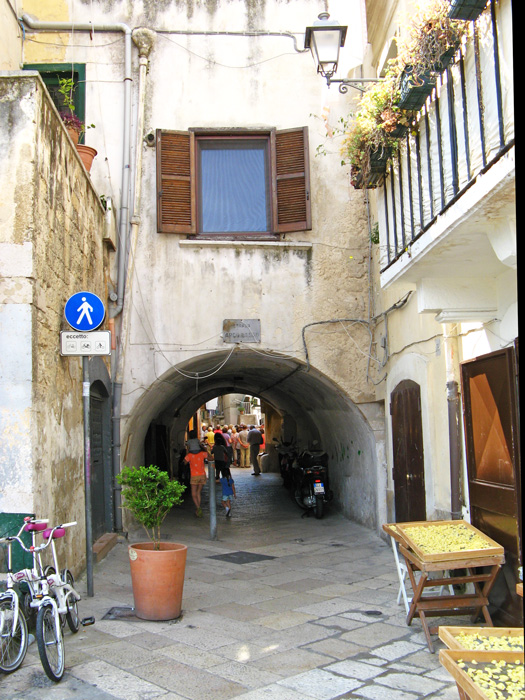
That’s our group up ahead. The guide is explaining how the ladies make orecchiette, a variety of home-made pasta typical of Apulia. Its name comes from its shape, which resembles a small ear:
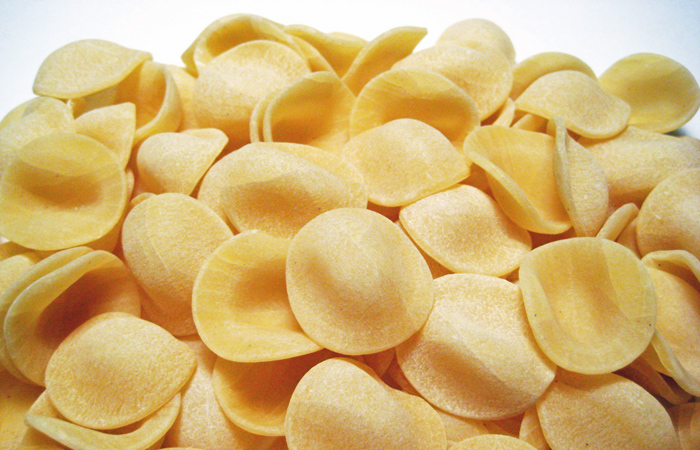
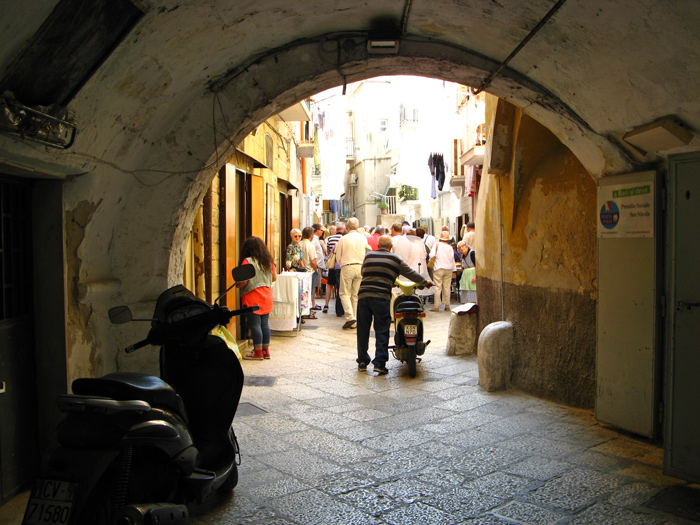
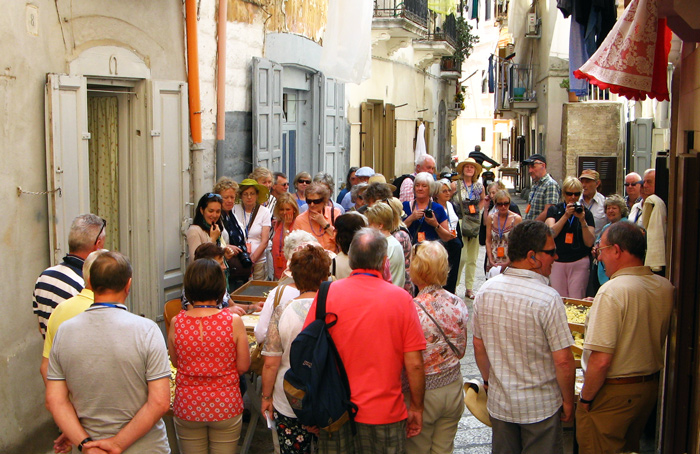
Eventually, we moved off to see the Bari Cathedral. Finding it a difficult shot, I have included this Internet photo of unknown vintage:
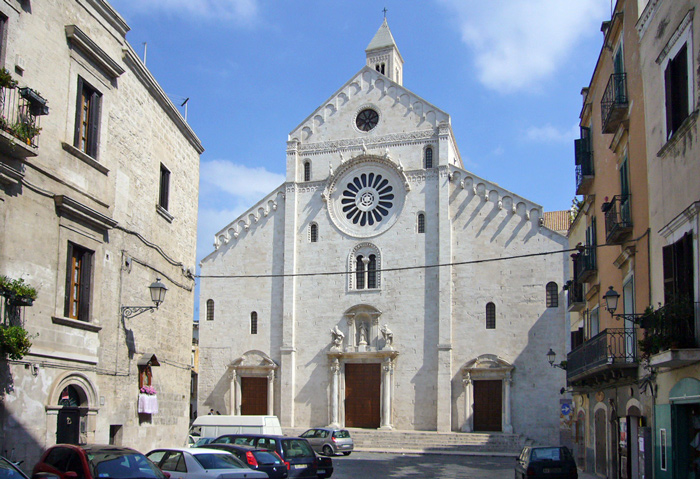
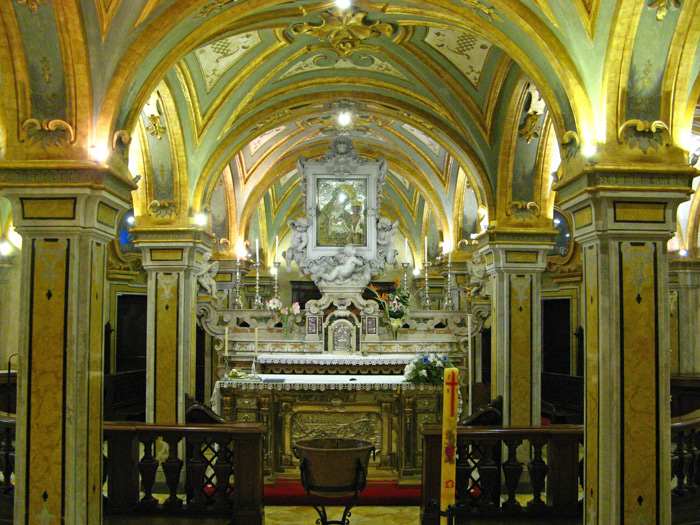
The piazza in front of the Cathedral was decorated for the feast day. Regularly-spaced, decorative stanchions were adorned with myriads of tiny lights ready for the nighttime celebration:
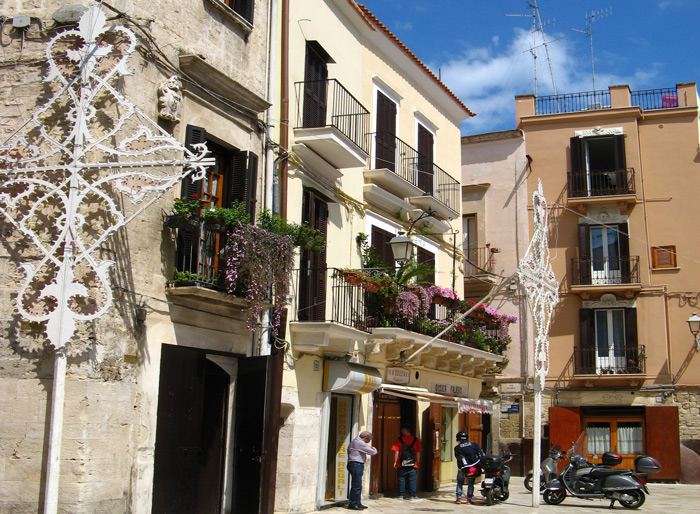
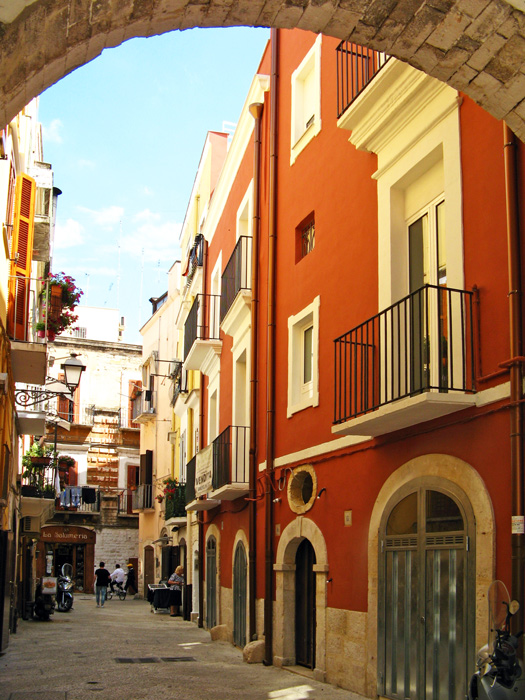
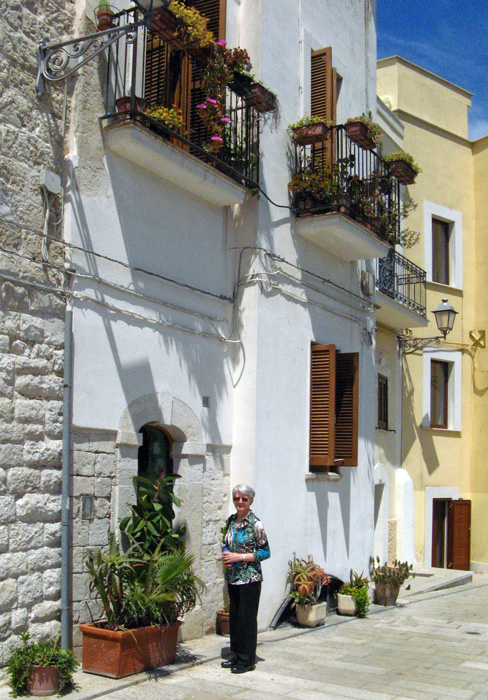
It wasn’t hard to find the 11th-century Basilica di San Nicola. Dedicated to St. Nicholas, also known as Santa Claus --- at least in the USA --- this Romanesque structure was specially built to house his remains, which still lie in the crypt. This is an important religious destination, and not just for Catholics: a chapel in the crypt is dedicated to Orthodox pilgrims (St. Nicholas is the patron saint of Russia):
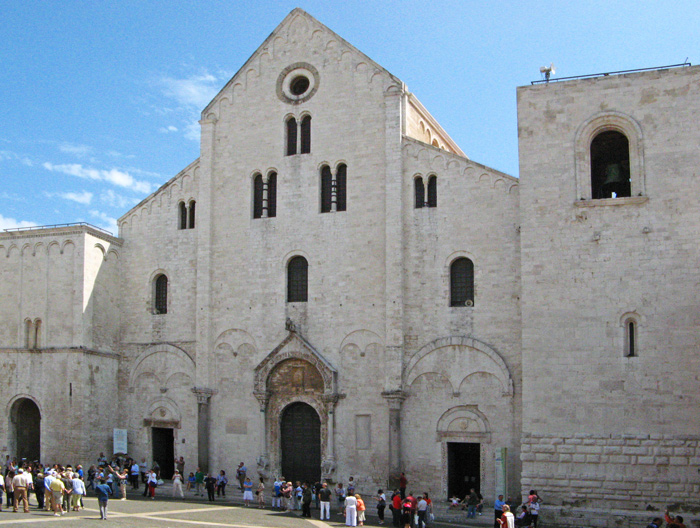
St. Nicholas, a bishop in Myra (present day Turkey), was famous for his generosity, anonymous gift-giving and piety. As we visited Myra in 2003, we well remember learning that St. Nicholas was buried there after dying around 300 AD. So, how to reconcile that with Bari’s contention that his remains are in the crypt of this church?
We visited Bari on just the right day to answer that question: May 9. This date is celebrated annually in the Russian Orthodox Church as the feast day of the “Translation of the Relics of St. Nicholas from Myra to Bari.” This “translation” of his remains occurred May 9, 1087, when a group of sailors and merchants from Bari forcibly broke into the gravesite of St. Nicholas, took most of the bones and sailed off with them to Bari. The most probable rationale for so doing was to save the saint’s remains from the Turks, who had been known to destroy churches and Christian objects. Later, other fragments from the Myra gravesite wound up in Venice.
When we arrived at the Basilica, there was an air of expectancy created by people forming a passage in front of the church. Soon enough, along came a procession of Orthodox priests carrying a banner with an icon-style painting of St. Nicholas:
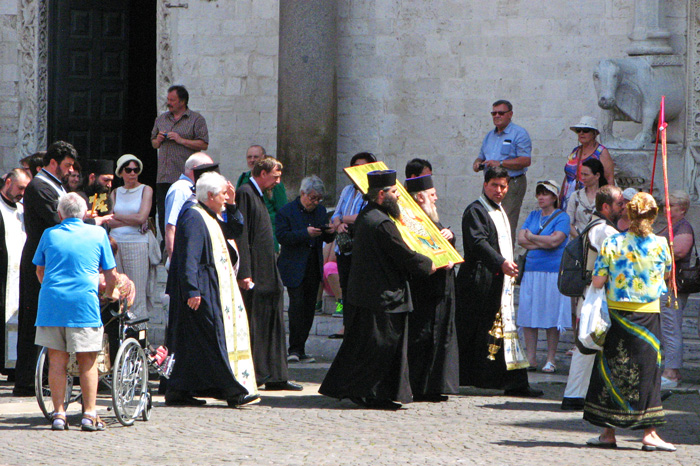
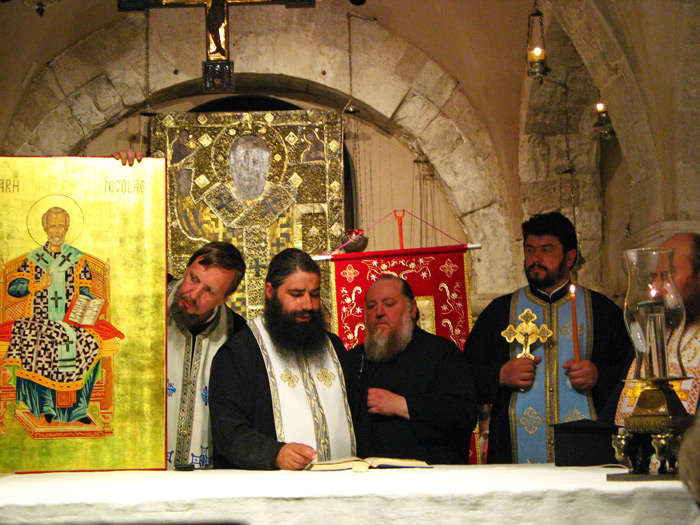
It is unfortunate that our time in Bari was so short. The festival honoring St. Nicholas actually goes on for days. I found a description of the festival’s events and, for those who might be curious, have copied it below:
“On the 7th of May, priests take the iconic-painting of St. Nicholas for a day at sea. The public square and other areas are turned into a festive fairyland lit by large, lacy screens.
The next morning, on the 8th, crowds gather at the breakwater for an outdoor Mass celebrated by the Archbishop of Bari. A larger-than-life statue of St. Nicholas from the basilica is brought in procession and put in place next to the altar for the two-hour service.
After the Mass, the statue embarks on a day-long sea voyage escorted by a flotilla with dozens of boats. In the evening the harbor is lined with thousands of people waiting to greet the statue’s return. Twelve costumed men carry the impressive figure on their shoulders, accompanied by bearers with flower poles and torches.
A festive parade --- with banners of St. Nicholas, bands, torches, and people with devotional items --- follows the statue back into town. Cheers follow its progress as it is brought to stand in an illuminated public square. Pilgrims will visit the statue there for several days before it returns to its place in the basilica.
The central part of the celebration is the evening of May 9th. The basilica is filled-to-overflowing for another Mass, again celebrated by the Archbishop of Bari. Invited ecumenical guests, particularly Orthodox, are present. As the Mass concludes, the altar party, choir, and invited guests seated in the front rows, go down to the crypt which holds St. Nicholas’ tomb. The choir chants as the rector crawls into an opening at the front of the tomb and brings out a liquid, called manna, which has always accumulated around the relics.
A great exclamation rises as the vessel is elevated. With acclamation, the vessel is borne up into the church where the faithful queue to venerate the manna. Outside the celebration continues with fireworks and merrymaking on into the night.”
Anyway you slice it, that would be quite a festival to witness. The sea voyages of the painting and the statue (in case you missed the significance) memorialize the movement of St. Nicholas’ relics across the sea.
Before leaving Bari, we tracked down the statue of St. Nicholas, resting from its day-long voyage of the day before:

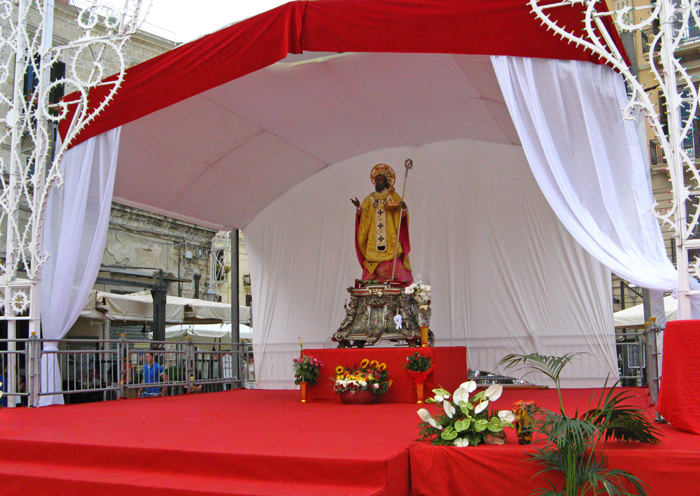
Finally, bidding St. Nick a fond adieu and promising to be good, we headed back to our coach.